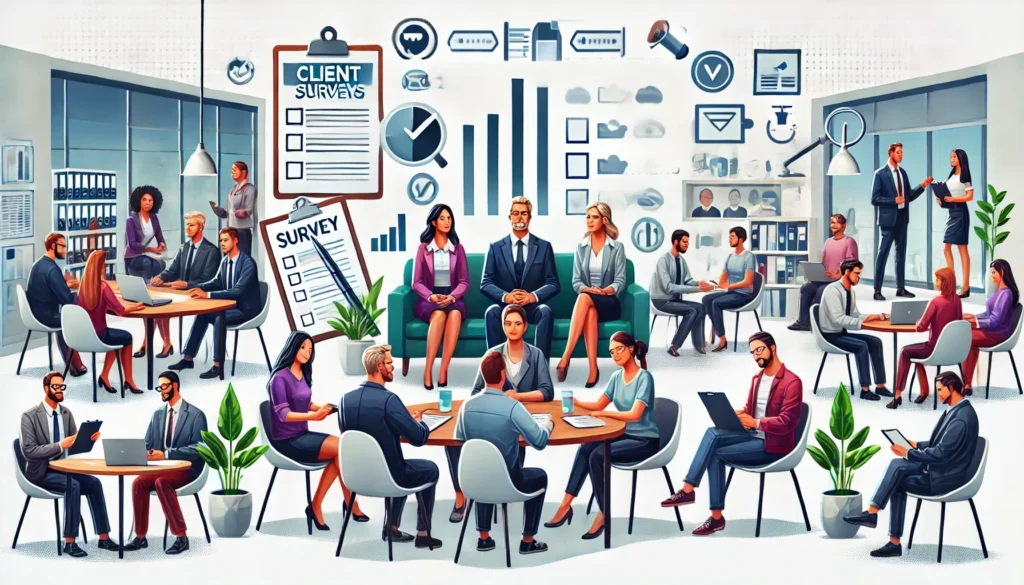Building strong relationships with overseas customers

Previous article: Communication in teams and cross-cultural team management
Strong communication skills are essential for establishing clear expectations and building relationships with customers, especially global. This article outlines strategies to enhance communication efficiency and effectiveness in client interactions.
Staff augmentation for outsourcing companies 101
- Scaling workforce without losing quality
- Communication in teams and cross-cultural team management
- Building successful relationships with foreign customers — you are here
- Using data analytics in human resources for better decisions
- Data leakage prevention in hybrid teams
Your relationships with customers: Understanding communication barriers
Deutsche können Englisch, aber kaufen auf Deutsch
A proverb meaning "Germans can English, but buy in German."
Various barriers can impede information exchange and understanding:
- Language and cultural differences. Misunderstandings can arise from differing languages, cultural norms, values, and communication styles.
- Emotional and perceptual barriers. Strong emotions, assumptions, and lack of active listening can hinder effective communication and lead to missed opportunities.
- Information overload and lack of clarity. Unclear messages and excessive information can overwhelm clients, leading to misinterpretations.
- Hierarchy and power dynamics. Organizational structures and power imbalances can complicate your relationships with customers, making them hesitant to share feedback openly.
- Lack of transparency and trust. A lack of transparency can create anxiety and hinder effective communication, while trust is essential for building strong client relationships.
These barriers can significantly affect client satisfaction and project outcomes by triggering misunderstandings, delays, and strained relationships, impacting the overall success of outsourcing projects.
Tools and technologies for communication
To minimize communication barriers, integrate the right tools into your workflows:
Calendar and scheduling tools
- Google Calendar. Organize schedules across regions, displaying meeting times in local time zones.
- Calendly. Simplifies meeting coordination by detecting invitees' time zones.

Messaging and video conferencing apps
- Slack. Enables real-time communication and collaboration.
- Microsoft Teams. Facilitates messaging, calling, and video conferencing.
- Zoom. Reliable for meetings of all types.
- Google Meet. Integrates with Google Calendar for seamless face-to-face communication.
- Pumble. User-friendly interface for team interactions.
Project management tools
Time zone converters
- World Time Buddy. Visual comparison of different time zones.
- Timeanddate.com World Clock. Time zone conversion for multiple cities.
- Clocker for Mac. Quick time zone references in Mac's menu bar.
Integrating communication technologies to boost relationships with customers
Diversity isn't just about representation; it's about combining different ideas and perspectives to solve complex problems in ways we wouldn't have thought of before.
Rahul
Below are the steps for efficient integration of communication technologies:
Establish clear protocols
- Define specific tools for each communication type (e.g., Slack for quick updates, email for formal messages).
- Set clear expectations for response times based on urgency and time zones.
Centralize project management
Leverage asynchronous communication
- Encourage using messaging apps for non-urgent communication.
- Utilize threads and channels to organize conversations.
Optimize scheduling
- Use shared calendars to display everyone's availability.
- Simplify meeting scheduling with tools like Calendly.
Standardize video conferencing
- Choose a primary platform (Zoom or Google Meet) for all video calls.
- Set clear guidelines for meeting etiquette.
Create a knowledge base
- Document processes and important information in a central location (e.g., Notion, Confluence).
- Encourage team members to contribute and update regularly.
Manage time zones
- Visualize time differences with tools like World Time Buddy.
- Display multiple time zones in calendars and project tools.
Schedule regular check-ins
- Have recurring meetings at times that work for everyone, rotating as needed.
- Use these meetings to align on priorities and address challenges.
Promote cultural awareness
- Offer training on cultural differences and communication styles.
- Foster a respectful and inclusive environment.
Use AI tools
- Leverage AI for language translation, transcription, or scheduling.
- Analyze communication patterns with AI for optimization.
Gather regular feedback
- Regularly collect feedback on communication tools and processes.
- Be open to adjusting your approach based on team input.
Provide comprehensive training
- Offer thorough onboarding and ongoing training for all tools.
- Create easy-to-access guides for quick reference.
Cultural competence and sensitivity
- Research. Learn about your client's culture, values, norms, and business etiquette.
- Adapt. Tailor your communication style to match the client's preferences.
- Respect. Acknowledge and follow the client's decision-making processes.
- Train your team. Regularly provide cultural competence training, including interactive workshops and guest speakers, to enhance awareness and understanding.

Strategies for time zone management
Managing time zones effectively requires proper scheduling and may also include creating a round-the-clock communication cycle. Below are the main strategies you can use.
- Flexible schedules. Allow for adjusted work hours to maximize overlap with colleagues in other time zones.
- Rotating meetings. Alternate meeting times to share the burden of inconvenient hours.
- Asynchronous communication. Utilize tools like Monday or Asana for task tracking and encourage written updates or video messages.
- Clear handoffs. Establish clear procedures for smooth transitions between shifts or time zones.
- Centralized knowledge base. Maintain a shared repository of information for easy access across time zones.
- Urgent issue protocol. Develop a plan for addressing urgent matters outside of regular working hours.
- Strategic scheduling. Use tools like Calendly and Google Calendar to display meetings in local time zones.
- Inclusive culture. Foster understanding and empathy for the challenges of working across different time zones.
- Time zone tools. Utilize apps like Clocker for Mac or World Time Buddy for easy reference and conversion.
- Regional representatives: Designate points of contact in each major time zone.
- Record meetings. Record meetings that not everyone can attend for later viewing and feedback.
- Follow-the-sun model. For 24/7 coverage, organize shifts that follow the workday across different time zones.
Building strong relationships with customers
Strong client relationships involve effective communication, personalization, showcasing expertise, being responsive, exceeding expectations, fostering trust, involving clients in the process, and celebrating successes together.
Communicate effectively and consistently
- Regular check-ins to discuss progress and address concerns.
- Clear and transparent communication about project status, potential issues, and timelines.
- Active listening to client feedback and acting on it promptly.
Personalize the client experience
- Understand client needs by learning about their business, industry, and specific pain points.
- Build personal connections by engaging with clients on a personal level and acknowledging their achievements.
Showcase expertise
- Provide valuable insights and advice to help clients achieve their goals.
- Educate clients about your processes and the rationale behind your decisions.
Be responsive and proactive
- Address client inquiries and concerns promptly.
- Anticipate potential issues and offer proactive solutions.
Exceed expectations
- Deliver exceptional service by going above and beyond what is expected.
- Surprise and delight clients with unexpected benefits or gestures of appreciation.
Build trust and transparency
- Maintain honesty and integrity in all communications.
- Set realistic expectations and ensure they are met or exceeded.
Establishing relationships with customers
- Involve clients in the project process by engaging them at every stage.
- Create feedback mechanisms and act on the suggestions received.
Celebrate successes together
- Acknowledge project completions, successful campaigns, and other achievements.
- Show appreciation for the client's business and trust.

Evaluating communication effectiveness
Evaluating the effectiveness of communication is essential for maintaining strong relationships with customers. Here are some strategies and key performance indicators (KPIs) to assess and improve your communication efforts.
Step 1. Establish metrics and KPIs
- Track average response time to client inquiries and percentage of inquiries responded to within a set timeframe.
- Use tools like Net Promoter Score (NPS) and Customer Satisfaction (CSAT) surveys to gauge client sentiment.
Step 2. Gather metrics and feedback
- Simultaneously, collect data on response times, project milestone achievement rates, client retention rates, and client satisfaction scores.
- Similarly, utilize engagement metrics like email open rates, meeting attendance, and response times.
- Likewise, gather internal feedback from account managers, project teams, and other client-facing staff.
- In addition, use sentiment analysis tools to evaluate the tone and sentiment of client communications.
Step 3. Analyze feedback
- Review client surveys, focusing on both quantitative scores and qualitative feedback to identify recurring themes or specific issues.
- Evaluate project performance to determine correlations between communication effectiveness and successful project delivery.
Step 4. Conduct communication audits
- Review all client communication channels and materials to ensure consistency and quality.
- Identify gaps where communication can be enhanced.
Step 5. Implement feedback
- Develop an action plan based on the feedback and data collected.
- Pilot changes on a small scale or with a select group of clients to test their effectiveness.
Step 6. Monitor and adjust
- Continue to monitor metrics and gather feedback regularly.
- Adjust strategies based on ongoing feedback and performance data.
Detailed step-by-step example of the evaluation process
1. Initial data collection
- Metrics and surveys. Begin by collecting data on key metrics such as response times, project milestone achievement rates, client retention rates, and client satisfaction scores (NPS and CSAT surveys).
- Engagement metrics. Track email open rates, meeting attendance, and response times to gauge how actively clients are engaging with communications.
2. Feedback analysis
- Client surveys. Analyze the results of client surveys, focusing on both quantitative scores and qualitative feedback to identify recurring themes or specific issues. This is a way to maintain goold relationships with customers and keep their intentions on track.

- Internal feedback. Gather insights from your internal teams, such as account managers and project leads, on their perceptions of client communication effectiveness and any recurring issues they’ve observed.
- Sentiment analysis. To begin with, use sentiment analysis tools to evaluate the tone of client communications over the past few months, identifying any shifts in sentiment that could indicate changes in client satisfaction.
3. Performance review
- Project success correlation. Subsequently, examine completed projects to determine if there is a correlation between communication effectiveness and successful project outcomes (on-time delivery, within budget, client satisfaction).
- Case study review. Furthermore, select a few projects to create detailed case studies, highlighting how communication strategies impacted the project's success or failure.
4. Audit and gap analysis
- Communication channels audit. Additionally, conduct a thorough audit of all communication channels used (email, project management tools, meetings) to ensure they are being used consistently and effectively.
- Identify gaps. Moreover, compare current practices against best practices to identify any gaps or areas where communication could be improved.
5. Feedback implementation
- Action plan. Following this, develop an action plan based on the feedback and data collected. This might include changes to communication protocols, additional training for team members, or the introduction of new tools or processes.
- Pilot changes. Implement changes on a small scale or with a select group of clients to test their effectiveness before rolling them out more broadly.
6. Continuous improvement
- Monitor and adjust. Continue to monitor the same metrics and gather feedback regularly to assess the impact of the changes made. Be prepared to make further adjustments as needed based on ongoing feedback and performance data.
Conclusion
Indeed, building effective relationships with customers is vital for making them long and successful. Establishing clear metrics, conducting regular surveys, monitoring engagement, gathering feedback, analyzing outcomes, and tracking retention are key strategies for continuous improvement.
Egor Kaleynik
IT-oriented marketer with B2B Content Marketing superpower. HackerNoon Contributor of the Year 2021 Winner – MARKETING. Generative AI enthusiast.
Featured in: Hackernoon.com, Customerthink.com, DZone.com, Medium.com/swlh
More info: https://muckrack.com/egor-kaleynik